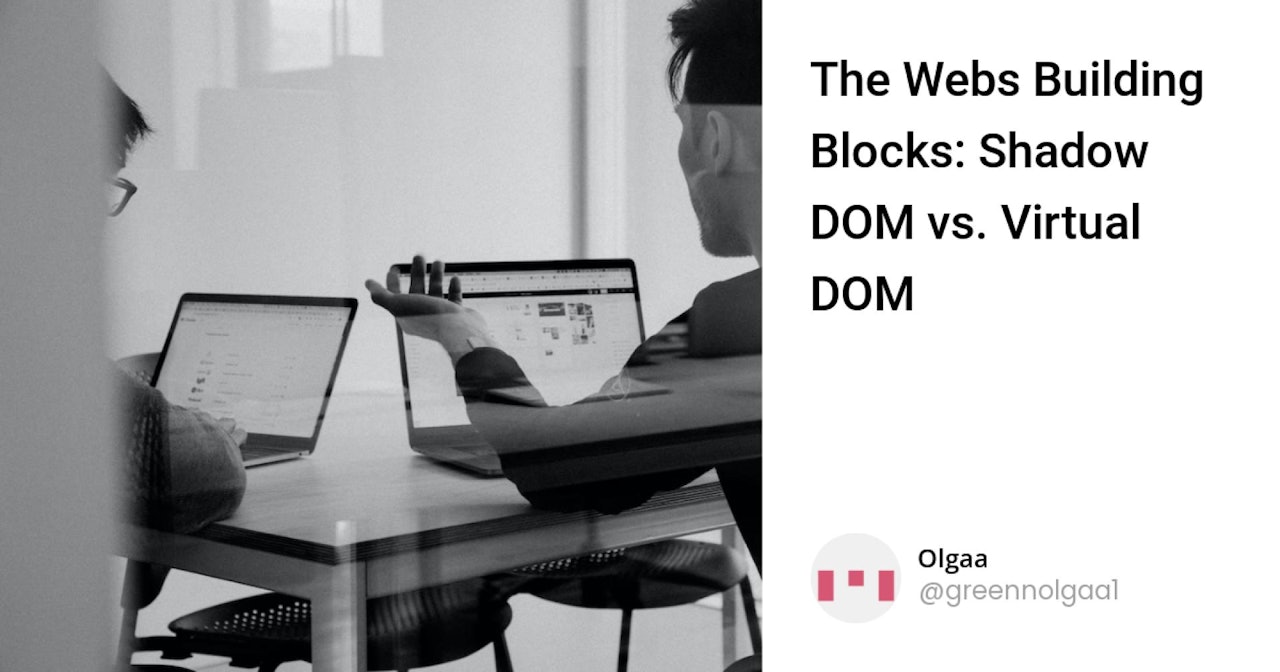In the dynamic realm of web development, innovation is a constant companion. Two such innovations that have redefined the way web applications are created and rendered are the Shadow DOM and the Virtual DOM. In this in-depth exploration, we'll dissect the concepts, mechanisms, benefits, and use cases of both Shadow DOM and Virtual DOM. By the end, you'll have a comprehensive understanding of these web technologies and how they contribute to modern web development.
Introduction to Shadow DOM and Virtual DOM
In a world where web applications are becoming increasingly complex and interactive, efficient rendering and controlled encapsulation are paramount. This is where both the Shadow DOM and Virtual DOM come into play.
The Shadow DOM: The Shadow DOM is a web standard that allows encapsulation of styles, DOM structure, and behavior within a scoped boundary. It provides a way to create isolated components, ensuring that styles and functionality within the Shadow DOM don't interfere with the styles and functionality of the surrounding web page.
The Virtual DOM: The Virtual DOM is a concept popularized by React, a JavaScript library for building user interfaces. It is a lightweight in-memory representation of the actual DOM. By using the Virtual DOM, changes to the UI are first applied to the Virtual DOM, and then the differences between the Virtual DOM and the actual DOM are efficiently updated, minimizing direct manipulation of the real DOM.
Shadow DOM: Delving into the Details
The Shadow DOM is a browser technology that encapsulates the presentation and behavior of a web component within a scoped boundary. This isolation prevents the styles and behavior of the Shadow DOM from affecting other parts of the page and vice versa.
The Shadow DOM comprises a shadow tree, which is a separate DOM tree that lives alongside the regular DOM tree. The elements within the shadow tree are not directly accessible from the outside, providing encapsulation. The Shadow DOM's encapsulation helps in building reusable and independent web components.
Virtual DOM: Pioneering Efficiencies
The Virtual DOM is a lightweight, in-memory representation of the actual DOM. It was introduced to improve the efficiency of updating the UI in web applications. By minimizing direct manipulation of the real DOM, the Virtual DOM reduces the performance bottlenecks associated with frequent DOM updates.
When changes are made to the UI in a React application, those changes are first applied to the Virtual DOM. React then calculates the differences between the previous Virtual DOM and the new one using a process called "reconciliation." After this calculation, only the necessary changes are updated in the actual DOM, resulting in improved performance.
Comparing Shadow DOM and Virtual DOM
The Shadow DOM is primarily concerned with encapsulating the styles and behavior of a component, ensuring isolation. It prevents styles from leaking out and external styles from seeping in. The Virtual DOM, on the other hand, focuses on optimizing DOM updates by creating an efficient intermediary layer that minimizes direct interactions with the actual DOM.
 View Website
View Website
 View Website
View Website
 View Website
View Website
The Shadow DOM and Virtual DOM can be used in conjunction. The Shadow DOM can be used to encapsulate the styles and behavior of individual components, while the Virtual DOM can be utilized to efficiently manage updates to the UI, enhancing overall performance.
Use Cases and Benefits of Shadow DOM
The Shadow DOM offers a range of benefits and serves specific use cases that enhance the encapsulation and isolation of components within web applications.
Benefits:
- Style Encapsulation: One of the primary benefits of the Shadow DOM is its ability to encapsulate styles within a component. This prevents the styles of a component from interfering with or being interfered by the styles of other components or the global styles of the page.
- Isolation of Behavior: The Shadow DOM isolates the behavior and functionality of a component. This isolation ensures that JavaScript functions and event handlers within a component don't affect other components or the rest of the page.
- Reusability: Shadow DOM encourages the creation of reusable components. Components encapsulated within a Shadow DOM can be packaged as custom elements, allowing developers to use them across different projects without worrying about unintended side effects.
- Scoped Selectors: Shadow DOM introduces scoped CSS selectors. This means that the styles defined within the Shadow DOM apply only to the elements within that component's shadow tree, preventing style leaks to the surrounding page.
Use Cases:
- Custom UI Elements: Creating custom UI elements like buttons, input fields, and sliders with encapsulated styles and behavior is a prime use case for the Shadow DOM. This ensures that the styles and functionality of these elements remain consistent and isolated.
- Complex Components: Components with complex behavior, such as modals, tooltips, and dropdown menus, benefit from the Shadow DOM. It allows these components to encapsulate their behavior, preventing conflicts with the rest of the page.
- Web Components: The Shadow DOM is an integral part of the Web Components standard. When creating reusable and encapsulated components that can be easily shared and integrated into various projects, the Shadow DOM is crucial.
Use Cases and Benefits of Virtual DOM
The Virtual DOM offers performance optimizations that make it a powerful tool for efficient rendering and updating of user interfaces.
Benefits:
- Efficient Updates: The most significant advantage of the Virtual DOM is its ability to perform efficient updates. Changes made to the UI are first applied to the Virtual DOM, and then only the differences between the Virtual DOM and the actual DOM are updated. This minimizes costly and often slow direct manipulations of the real DOM.
- Minimized Reflows and Repaints: Virtual DOM updates are batched and optimized, reducing the number of reflows and repaints in the browser. This leads to smoother and faster UI rendering, improving user experience.
- Enhanced Performance: By minimizing direct interaction with the actual DOM and optimizing the update process, the Virtual DOM significantly improves the performance of web applications, especially in scenarios where there are frequent UI changes.
Use Cases:
- Dynamic User Interfaces: Applications with dynamic and frequently changing user interfaces benefit greatly from the Virtual DOM. It reduces the performance overhead of rendering and updating complex UI components.
- Real-Time Applications: Real-time applications, such as collaborative editors and chat applications, require constant updates to the UI. The Virtual DOM's efficient update mechanism ensures smooth rendering even when the UI changes rapidly.
- Rich Data Visualization: Applications dealing with data visualization, such as charts and graphs, often require frequent updates to display changing data. The Virtual DOM optimizes these updates, preventing UI slowdowns.
Conclusion
In the ever-evolving landscape of web development, the Shadow DOM vs Virtual DOM stand as pillars of innovation, addressing critical concerns of encapsulation and performance optimization. Understanding the nuances and capabilities of both technologies empowers developers to create seamless user experiences that are not only visually appealing but also performant and robust.





Comments (0)